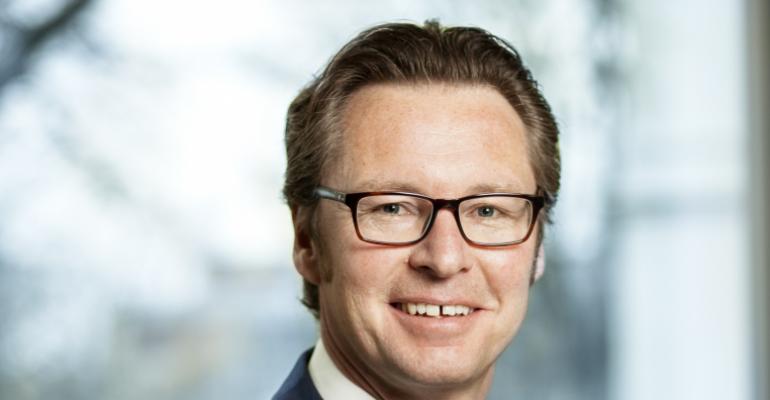“The strength and character of people in this business has amazed me,” he told Seatrade Maritime News in a wide-ranging interview last week. “It has not only been a question of fighting the immediate challenges, but it’s also the adaptability of everyone to look for better and different ways of doing things. I believe that we are on the edge of a maritime renaissance.”
Broadly positive, Ørbeck-Nilssen singles out the appalling treatment of seafarers as one critical exception. Earlier this year, he described their treatment and the fact that they were not recognised at an early stage as key workers as a ‘disgrace’.
He has not changed his mind and admits to increasing frustration that the crisis still needs fixing. However, he sees the fact that the United Nations, the IMO, and many nation states now coming together to help them as a positive development.
Amazing support
“These are the people that have kept global supply chains running throughout this difficult year. Yet they have been forced to stay on board for such long periods of time, with the constant uncertainty of not knowing when they may be relieved,” he said, revealing that the classification society has backed The Mission to Seafarers throughout this year in the “amazing support” that the charity has provided. “Looking back at this year, that’s the money we spent most wisely,” he observes.
Apart from the humanitarian angle, he points out that uncertainty, stress and fatigue have a direct impact on mental capacity, and the ability of ships’ crews to continue performing at the top of their game. Ultimately, from a classification society’s point of view, this raises safety questions, both for people and assets. “Let’s not forget,” he reminds, “ship classification is about safety at sea.”
Key milestones
So what are the milestones that shipping has passed which make Ørbeck-Nilssen so positive about the future. “Well, as I’ve said before, digitalisation has advanced by half a decade in just a few months. And where there was reluctance before, it is now seen as a basket of opportunities. Remote surveys are of course one key development, and we have now undertaken more than 20,000 of these over the last two years. But there are many other digital advances.”
Ørbeck-Nilssen cites one, relating to machinery maintenance. He explains that this used to be carried out by a surveyor visiting each individual vessel in a fleet, spending many hours on planes, examining logbooks, filling in spreadsheets and other routine checks that were, honestly, not very interesting.
“Now, we can do this digitally for an entire fleet in less than a day. The results are fantastic … improvements in productivity, huge time savings, no flights, no pollution and, I suspect, more job satisfaction from achieving a better result more effectively,” he explains.
Then there is shipping’s decarbonisation journey, which has now begun and gives Ørbeck-Nilssen a chance to re-emphasise the classification society’s support for LNG and the new fuels that it will facilitate between now and 2050. DNV GL is, of course, looking at possible new marine fuels of the future, but the decarbonisation process is urgent and these fuels will not be available in quantity and as possible options, perhaps for another ten years.
“We believe that gas provides a good alternative to conventional fuels and could be with us for one or two vessel generations. It has lots of benefits, including scope for low or zero-carbon drop-in fuels, gas with carbon capture, biogas and synthetic LNG. The point is: we don’t have many options today, and we need to get moving!”
Changing fundamentals
Perhaps the most fundamental change that Ørbeck-Nilssen identifies was already evident before the pandemic but has advanced rapidly over recent months. It relates to collaboration and transparency, two fundamentals that so far have not gone hand-in-hand with maritime business.
On collaboration, he identifies the Sea Cargo Charter and the Poseidon Principles as exceptional developments. “Digitalisation helps with transparency and as an industry, we are moving forward and making sure that shipping continues to be the most carbon-friendly means of transport,” he says. However, the close involvement of leading ship financiers and heavyweight customers is a major positive.
In passing, he also mentions that more transparency, accountability and digital monitoring should help to support the short-sea sector and prevent moves to transfer cargo from ships to trucks and trains. “We have a great story to tell and seeing short-sea shipping replaced by other modes of transport is truly sad to see.”
Outstanding priorities
Whilst Ørbeck-Nilssen is positive, he is far from complacent. “We must do what we do better than we did before,” he declares, “and some of the basics still need improvement.”
He identifies several key areas of concern, including bulk carrier safety, whether caused by cargo liquefaction or cargo combustion; shipboard fires generally and the ability to fight them effectively; and the highly topical loss of containers from large vessels in heavy seas. The classification society will soon be releasing a new model to estimate lashing loads for different ships in varying sea conditions.
Notably, he also mentions “the dark side of digitalisation” as warranting close attention. Despite all the benefits that this technology can bring, it also generates new dangers and vulnerabilities of which we should all be aware, he says.
Copyright © 2024. All rights reserved. Seatrade, a trading name of Informa Markets (UK) Limited.
Add Seatrade Maritime News to your Google News feed.  |

